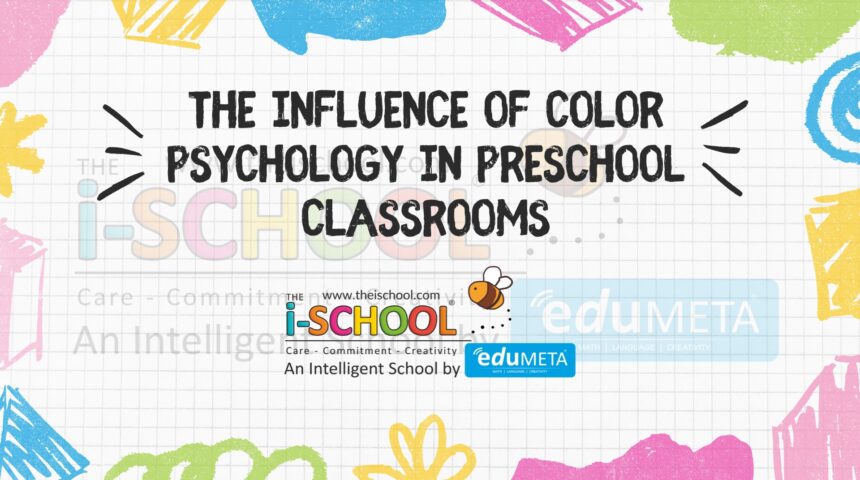The Influence of Color Psychology in Preschool Classrooms

Color is more than just a visual experience; it has a profound impact on our emotions, behavior, and learning abilities. This is especially true for young children, who are highly sensitive to their environment. In preschool classrooms, where children spend a significant portion of their day, the use of color can play a crucial role in creating a space that is not only aesthetically pleasing but also conducive to learning and development. Let’s explore how color psychology influences preschool classrooms and how educators can use this knowledge to create an environment that nurtures young minds.
The Science Behind Color Psychology
Color psychology is the study of how different hues affect human behavior and emotions. Research has shown that colors can evoke specific feelings and responses, which can vary depending on cultural context, personal experiences, and even age. In the context of a preschool classroom, the right choice of colors can help children feel calm, focused, and engaged, while the wrong choices can lead to overstimulation or distraction.
Colors and Their Psychological Impact on Children
Each color has its own unique psychological effect, and understanding these can help in designing a preschool classroom that supports a child’s well-being and learning:
- Blue: The Calming Effect
Blue is known for its calming properties. It can help reduce feelings of anxiety and create a serene environment, making it an excellent choice for areas where children need to focus, such as reading corners or quiet zones. However, too much blue can make a space feel cold, so it’s best used in combination with warmer tones. - Yellow: The Mood Booster
Yellow is associated with happiness and energy. It can stimulate creativity and encourage a positive mood, making it ideal for areas where children engage in creative activities like drawing or storytelling. However, bright yellow should be used sparingly, as too much can be overwhelming and may lead to restlessness. - Green: The Balancer
Green is a soothing color that represents nature and growth. It is known to promote a sense of balance and calm, helping children feel secure and relaxed. Green is also believed to enhance concentration and focus, making it suitable for learning areas. A classroom with green elements can feel fresh and inviting. - Red: The Energizer
Red is a stimulating color that can increase energy levels and excitement. While it’s a great choice for play areas where active engagement is encouraged, too much red can be overpowering and may lead to feelings of aggression or restlessness. It’s best used as an accent color rather than the primary hue in a preschool classroom. - Orange: The Social Stimulator
Orange is warm and inviting, often associated with fun and playfulness. It can encourage social interaction and communication, making it a good choice for group activities or common areas where children come together. Like red, orange should be used in moderation to avoid overstimulation. - Purple: The Imagination Enhancer
Purple, often linked to creativity and imagination, can inspire young minds to dream and think creatively. It’s an excellent choice for areas dedicated to storytelling, art, or pretend play. Lighter shades of purple, like lavender, are particularly soothing and can create a peaceful atmosphere. - White: The Blank Canvas
White is often associated with cleanliness and simplicity. It can make a classroom feel open and spacious, but too much white can be stark and uninviting. Pairing white with other colors or incorporating colorful artwork can add warmth and personality to the space. - Brown: The Grounding Color
Brown tones, reminiscent of the earth, can make a classroom feel warm and grounded. It provides a sense of stability and comfort, which can be beneficial in helping children feel secure. Brown works well in combination with greens and blues to create a natural, calming environment.
Creating a Balanced Classroom Environment
While individual colors have specific effects, it’s important to consider how they work together in the classroom. A well-balanced color scheme that combines calming and stimulating colors can create a harmonious environment that supports various activities throughout the day. For example, a classroom might use calming blues and greens in quiet areas, while incorporating vibrant yellows and oranges in active play zones.
Additionally, it’s crucial to consider the personal preferences and cultural backgrounds of the children. Some children may have different responses to certain colors based on their experiences, so it’s important to observe how they react and adjust the environment accordingly.
Using Color to Support Learning Objectives
Educators can use color not just to create an emotionally supportive environment, but also to enhance learning. For example, color-coded materials can help children organize their tasks and understand concepts more easily. Brightly colored visual aids can capture attention and make learning more engaging. Similarly, using specific colors for different classroom zones can help children transition smoothly between activities, reducing confusion and increasing their sense of security.
Conclusion: The Power of Color in Early Education
The colors used in a preschool classroom are more than just decorative choices; they are powerful tools that can influence how children feel, behave, and learn. By understanding the principles of color psychology, educators can create a classroom environment that nurtures young minds, fosters creativity, and supports emotional well-being. Whether through calming blues, energizing reds, or mood-boosting yellows, the right colors can make a significant difference in the early educational experience, helping children thrive in their formative years.
